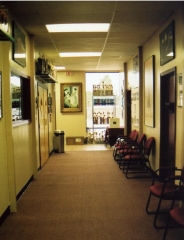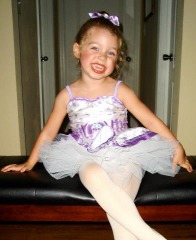FREQUENTLY ASKED QUESTIONS
How do you differ from other dance schools?
As for other dance schools, we can’t comment on the teachers or procedures, but we have several distinct differences from most other dance schools. Our Floor is one of our major differences – our professional floating marley dance floor offer additional cushioning and support to help prevent injuries and fatigue. We also have full time office staff, which means the person teaching the class is not distracted with administrative details, and there is always someone available to assist you with your customer service needs. We also keep our class sizes small. We also never, ever require our students to fund raise to cover dance school activities. SEE OUR COMPARISON FOR MORE INFORMATION!
Can we watch class?
Our 2-way windows are provided for occasional viewing only. It is up to the instructor of that class. The windows will be closed during Recital preparations and opened the 2nd week of each month in the Spring. It is open all summer and winter.
Can I sit in on my child’s class?
If the parents sit in it is too distracting for the students. There are too many authority figures and the children either lose class time looking for Mom & Dad’s approval, or they act out to see what reaction they will get. We encourage parents of young children to wait in the hallway so that if they are needed they are close by.
My child has been dancing for _____years and is interested in the competitive dance company?
Our Dance Company is by audition only and the student must have danced with us for at least a full year including a full hour ballet and technique class before being invited to audition for the Dance Company. (Also hand-out the Dance Co. Info sheet)
What do they do in the Pre-Dance Program?
Pre-Dance is the basic intro to dance class. They work on sequencing skills, remembering how to go from one step to another, basic coordination skills, all the basic skills they need to go into all the other styles of dance when they are older. They also work on a routine to perform in our year end show. They also work on Creativity, Coordination, Musicality, and Rhythm. Exploring rhythm and tempo through movement games makes understanding dance easy and fun. It is a very exciting experience for the child and parents.
When can I go on Pointe?
First, the bones of a child’s foot start to become harder at ages 9-11 years. This is commonly thought that dancers should not go on pointe until this time.
A pre-requisite for pointe work is approximately 3 years of formal ballet training should develop adequate strength, flexibility, balance and coordination. Barre’ and center work should be performed easily. The dancer must be able to go onto the center floor and be able to releve and passé position. This means that dancer must be able to stand balanced up on one foot with minimal shaking for a period of 15 seconds. If this is not possible, then the dancer is probably not strong enough to support the body’s weight.
How can I help my child at home?
One of the best ways parents can help their children is to expose them to performances, art galleries, buy ballet books and videos. This will open a whole new world not only for your child but for yourself as well. Also, always explain to your child to be as open as possible to corrections when taking class. They should have a clear understanding of their corrections so they can apply their correction. Applying corrections is one of the quickest ways to gain a level. We do NOT encourage parents “coaching” their students at home. Students always progress quickly and correctly when working in the classroom with a traditional professional.
What if I have questions or concerns?
Please keep in mind that the faculty/instructors always have the best interests of the students in mind. Our main goal is to see our students learn and progress. If you have any questions or concerns about your child’s progress or class schedule, please contact your child’s instructor or the school director at any time.
What is the difference between Jazz and Hip Hop?
The jazz style of dance is what is seen in many Broadway type show such as “Cats”. It is a more structured, stage style of dance. Hip Hop is a fast, higher energy type of dance seen in music videos and commercials. Dance moves seen in shows such as Janet Jackson, Britney Spears and N’ Sync would be typical examples of Hip Hop.
Remember If you are New to Dance please call for more information about our school
our 24 hour hotline Studio info line – 713-493-2592




